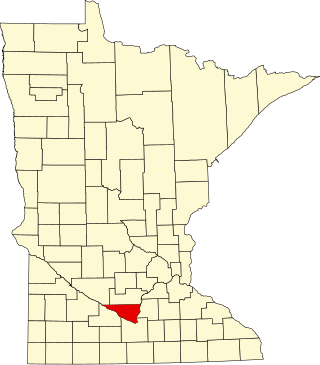
This is a list of the National Register of Historic Places listings in Nicollet County, Minnesota. It is intended to be a complete list of the properties and districts on the National Register of Historic Places in Nicollet County, Minnesota, United States. The locations of National Register properties and districts for which the latitude and longitude coordinates are included below, may be seen in an online map.

This is a list of the National Register of Historic Places listings in Otter Tail County, Minnesota. It is intended to be a complete list of the properties and districts on the National Register of Historic Places in Otter Tail County, Minnesota, United States. The locations of National Register properties and districts for which the latitude and longitude coordinates are included below, may be seen in an online map.

This is a list of the National Register of Historic Places listings in Le Sueur County, Minnesota. It is intended to be a complete list of the properties and districts on the National Register of Historic Places in Le Sueur County, Minnesota, United States. The locations of National Register properties and districts for which the latitude and longitude coordinates are included below, may be seen in an online map.

Stone Hill Historic District is a national historic district in Baltimore, Maryland, United States. It is one of the original mill villages along the Jones Falls, having been developed circa 1845–1847 to house textile mill workers. Comprising seven blocks, the district includes 21 granite duplexes, a granite Superintendent's House, and a granite service building – all owned by Mount Vernon Mills from 1845 to 1925.

The John C. Schricker House is a historic building located in the West End of Davenport, Iowa, United States. It was individually listed on the National Register of Historic Places in 1983. The following year, it was included as contributing property in the Riverview Terrace Historic District.
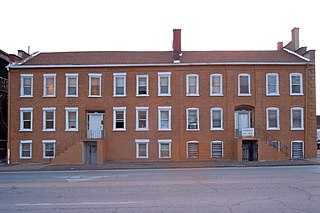
The Hiller Building, also known as the Schick Apartments, is located on the edge of downtown Davenport, Iowa, United States. The Federal style building is a row house. It was individually listed on the National Register of Historic Places in 1974. In 1983 it was included as a contributing property in the West Third Street Historic District.
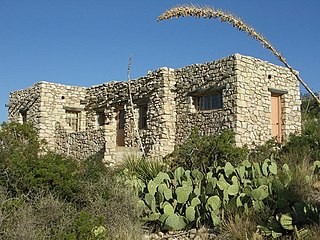
The Caverns Historic District comprises the central developed area of Carlsbad Caverns National Park. The complex was built between the early 1920s and 1942, initially in Pueblo Revival style, and later in New Mexico Territorial Revival style in the area around the natural entrance to Carlsbad Caverns. The earlier structures are built of local limestone, the later buildings in adobe. Thirteen buildings in the district are considered contributing structures. Buildings built between 1940 and 1942 were constructed with labor provided by the Civilian Conservation Corps.

Burpee Farm was a historic farmhouse on Burpee Road in Dublin, New Hampshire, United States. Probably built in 1793, it was a good example of 18th-century vernacular farmhouse architecture, and was one of the town's oldest buildings. It was listed on the National Register of Historic Places in 1983, and was destroyed by fire in 2013.

The Stone Farm is a historic farmhouse on Old Marlborough Road in Dublin, New Hampshire. Built about 1806 with several 19th-century alterations, it is a well-preserved example of a period farmhouse. The property was listed on the National Register of Historic Places in 1983.

The Stone-Darracott House is a historic house on Old Marlborough Road in Dublin, New Hampshire. It was built in 1792 by John Stone, an early settler of Dublin for whom nearby Stone Pond is named. The house was also made part of a "gentleman's farm" by Mrs. Alberta Houghton in the early 20th century, along with the adjacent Stone Farm. The house was listed on the National Register of Historic Places in 1983.
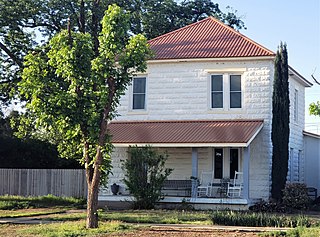
The William Baskin House, at 811 W. Quay Avenue in Artesia, New Mexico, was listed on the National Register of Historic Places in 1984.
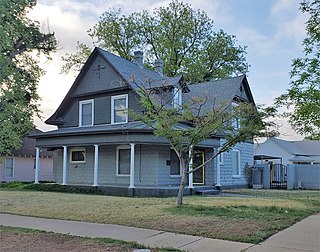
The Mauldin-Hall House, at 501 S. Roselawn Ave. in Artesia, New Mexico, was built in 1909. It was listed on the National Register of Historic Places in 1984.
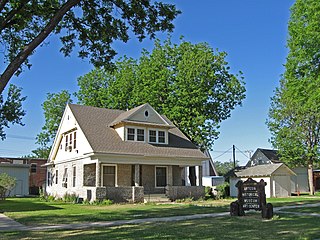
The Moore-Ward Cobblestone House, at 505 W. Richardson Ave. in Artesia, New Mexico, was built in 1905. It was listed on the National Register of Historic Places in 1984.

The Wilie D. Atkeson House, on W. Main St. in Artesia, New Mexico, was built in 1904. It was listed on the National Register of Historic Places in 1984.
The Edward R. Gesler House, at 411 W. Missouri Ave. in Artesia, New Mexico, was built in 1907. It was listed on the National Register of Historic Places in 1984.
The Dr. Robert M. Ross House is a historic house in Artesia, New Mexico. It was built in 1904 for Dr Robert M. Ross, a physician from St. Louis, Missouri who became the founding president of the First National Bank of Artesia in 1903. His wife, who worked in the post office, co-founded the public library in Artesia. The house was designed in the Queen Anne architectural style. It has been listed on the National Register of Historic Places since March 2, 1984.

The Sallie Chisum Robert House is a historic house in Artesia, New Mexico. It was built with cast stone in 1908 for Sallie Chisum Robert, one of Artesia's co-founders whose uncle was the cattle baron John Chisum. Born in Texas, she married a German immigrant, William Robert, only to divorce him and become a homesteader in Artesia; she later moved to Roswell, New Mexico. The house was designed in the Dutch Colonial Revival architectural style, with a gambrel roof. It was added to New Mexico's State Register of Cultural Properties in 1977. It has been listed on the National Register of Historic Places since March 2, 1984.
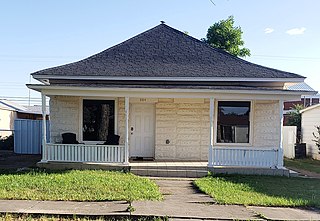
The Hodges-Sipple House is a historic house in Artesia, New Mexico. It was built in 1905 for John R. Hodges, the secretary and treasurer of the Artesia Improvement Company, a real estate development company, and the head of the Hollow Stone Manufacturing Company, an artificial stone company. The house was purchased by William Sipple, a real estate developer, in 1909. It has been listed on the National Register of Historic Places since March 2, 1984.
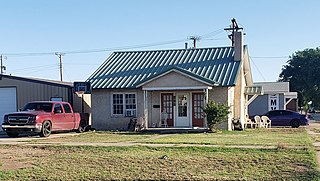
The Hodges-Runyan-Brainard House is a historic house in Artesia, New Mexico. It was built in 1904 for John Hodges, a real estate developer who used artificial stone to build many houses in Artesia. The house was purchased by rancher David W. Runyan in 1916. Two years later, his daughter Mary moved in with her husband, Reed Brainard. It has been listed on the National Register of Historic Places since March 2, 1984.


















